EDAA’s Casa Meztitla is a modern home in sync with its rocky surroundings

A strong connection with the outdoors and contextual harmony were integral to the design of this holiday house created by young Mexican architecture practice EDAA. Casa Meztitla sits at the foot of the sacred El Tepozteco Mountain, near the popular town of Tepoztlán in rural central Mexico. Designed as a couple's retreat for leisure and entertainment, the house blurs boundaries between indoors and outdoors, with wide rotating glass doors opening up to welcome the surrounding nature inside.
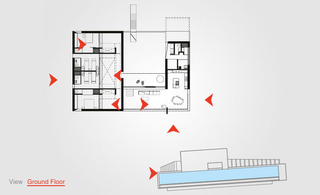
Take an interactive tour of Casa Meztitla
EDAA head architect Luis Arturo Garcia explains that the house is divided into four distinct zones: the social spaces, consisting of living, kitchen and dining areas leading out to the portico and garden; the service zone off the central courtyard, accommodating a toilet, shower room, laundry, storage and grill for alfresco dining; a row of four bedrooms, each with their own ensuite and patio; and a work/live studio space above, with access across roof terraces formed by the floor below.
Whilst allowing guests to connect with the outdoors and appreciate the region's warm subtropical weather, the scheme also aims to blend into the natural landscape, and prioritises sustainable living. With the building covering just 400 sq m of a 3,800 sq m site, the clients were left with large swaths of rugged garden, and used part of it to install an environmentally friendly storm water harvesting system.
Responding to the pressures of Mexico's seasonal conditions, stormwater is collected in the wet season. It is stored and purified for drinking and use throughout the rest of the year. Greywater is also recycled for flushing toilets, gardening, cleaning, and for the benefit of local wildlife struggling in the drought season. Storage is split between two containers: the potable reservoir sits beneath the central courtyard, whilst a maintenance reservoir sits further from the house. Their combined capacity reaches 280 sq m of water.
The residence is, Garcia suggests, 'context in itself'. Natural stone clads the concrete structure, camouflaging the house into the craggy backdrop beyond, so that only the monolithic white box of the upstairs studio - and a blossom of vibrant bougainvilleas marking the site boundary - announce the presence of this modern, tranquil home amidst the area's wooded landscaped terraces, formed over five hundred years ago by native Tepoztecos.
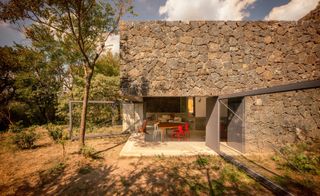
Large tempered glass doors swing outwards to expose the interior, blending inside and outside

The house's four main zones are spatially separated but linked by external yards and covered walkways, encouraging visitors to engage with the outdoors

Internal and external spaces are united by the house's polished concrete floor, and white cement and lime plastered walls, which line the main bedrooms and their individual courtyards
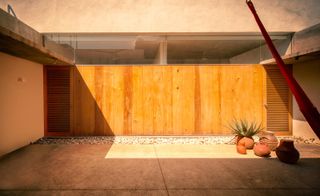
The pinewood wall of the two guest bedrooms creates a discreet frontage, while providing access out to a shared patio space
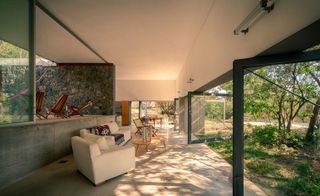
Walls of glazing open up on either side of the long, open planned living space, allowing for ample cross ventilation, as well as the Mexican sunshine to stream in
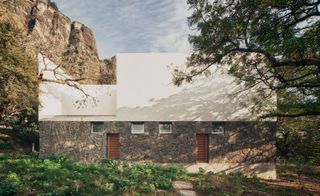
The white monolithic volume of the first floor studio space stands out boldly against the rocky lower floor and the mountainside beyond

The modern scheme is located within nature and the 500 year old landscaped terraces of El Tepozteco
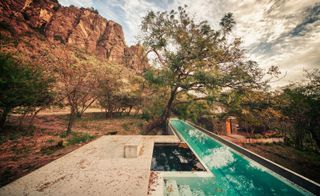
The house also features a narrow, elevated swimming pool. Water is collected on site in three large containers (the pool, a maintenance reservoir and a potable water tank) to ensure there is no waste and to allow year-round irrigation
Wallpaper* Newsletter
Receive our daily digest of inspiration, escapism and design stories from around the world direct to your inbox
-
 LEVC’s L380 is a truly magnificent minivan
LEVC’s L380 is a truly magnificent minivanThe London Electric Vehicle Company’s L380, is a magnificent minivan designed for upscale long-distance travel, as the maker of the London Taxi branches out into all-purpose EVs
By Jonathan Bell Published
-
 Enjoy ocean and jungle bliss at Bespoke Tulum’s residences in Mexico
Enjoy ocean and jungle bliss at Bespoke Tulum’s residences in MexicoBespoke Tulum is an exclusive hospitality complex designed by Muro Rojo Arquitectura on Mexico’s Caribbean coastline
By Sofia de la Cruz Published
-
 In Van Cleef & Arpels’ high jewellery, the archival meets the au courant
In Van Cleef & Arpels’ high jewellery, the archival meets the au courantVan Cleef & Arpels pays tribute to its rich heritage with a captivating high jewellery collection
By Hannah Silver Published
-
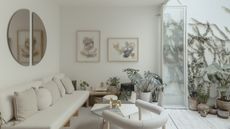 Antonio Solá offers a residential haven of calm in Mexico City
Antonio Solá offers a residential haven of calm in Mexico CityAntonio Solá, a new housing project by architecture studio Módica Ledezma, is a complex of four townhouses that offer serenity in the bustle of Mexico City
By Ellie Stathaki Published
-
 A Mexican artist’s studio makes the most of light and volume in San Miguel Chapultepec
A Mexican artist’s studio makes the most of light and volume in San Miguel ChapultepecA Mexican artist's studio and home, designed by JJRR in the heart of Mexico City, makes the most of volume and light for its owner, Stefan Brüggemann
By Ellie Stathaki Published
-
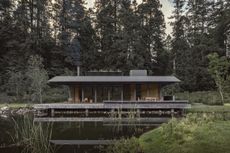 Pabellón de la Reserva and its sustainable architecture nod to its natural setting
Pabellón de la Reserva and its sustainable architecture nod to its natural settingPabellón de la Reserva by architecture studio Hemaa offers an idyllic countryside getaway, a stone's throw from Mexico City
By Ellie Stathaki Last updated
-
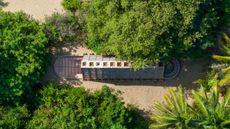 Orchid Pavilion channels Japanese philosophy for blossoming flowers in Puerto Escondido
Orchid Pavilion channels Japanese philosophy for blossoming flowers in Puerto EscondidoOrchid Pavilion by CCA Centro de Colaboración Arquitectónica provides fitting shelter for flower conservation in Mexico's Casa Wabi
By Ellie Stathaki Published
-
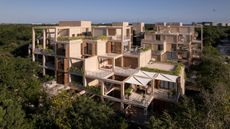 Residential development The Village on the Yucatán Peninsula frames its verdant environment
Residential development The Village on the Yucatán Peninsula frames its verdant environmentThe Village by Sordo Madaleno is a meticulously composed apartment building, built on a strict grid with an emphasis on outside space and connection to site
By Jonathan Bell Published
-
 1i Arquitectura’s House of the Tall Trees celebrates a spectacular forested site
1i Arquitectura’s House of the Tall Trees celebrates a spectacular forested siteThis Mexican retreat, House of the Tall Trees, makes the most of a wooded site with a striking combination of glass, timber and concrete
By Jonathan Bell Published
-
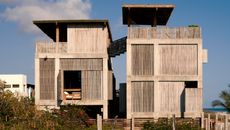 Casa Carrizo was designed as a breezy Mexican beach house
Casa Carrizo was designed as a breezy Mexican beach houseCasa Carrizo, designed by Mexican architecture studio BAAQ, is a beach house sitting on the idyllic shores of Mexico’s Pacific coast
By Ellie Stathaki Published
-
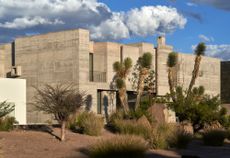 Casa HMZ by Lucio Muniain offers a labyrinthine sense of gradual discovery
Casa HMZ by Lucio Muniain offers a labyrinthine sense of gradual discoveryAn intriguing new build by Lucio Muniain channels the best of 20th-century Mexican architecture
By Ana Karina Zatarain Published